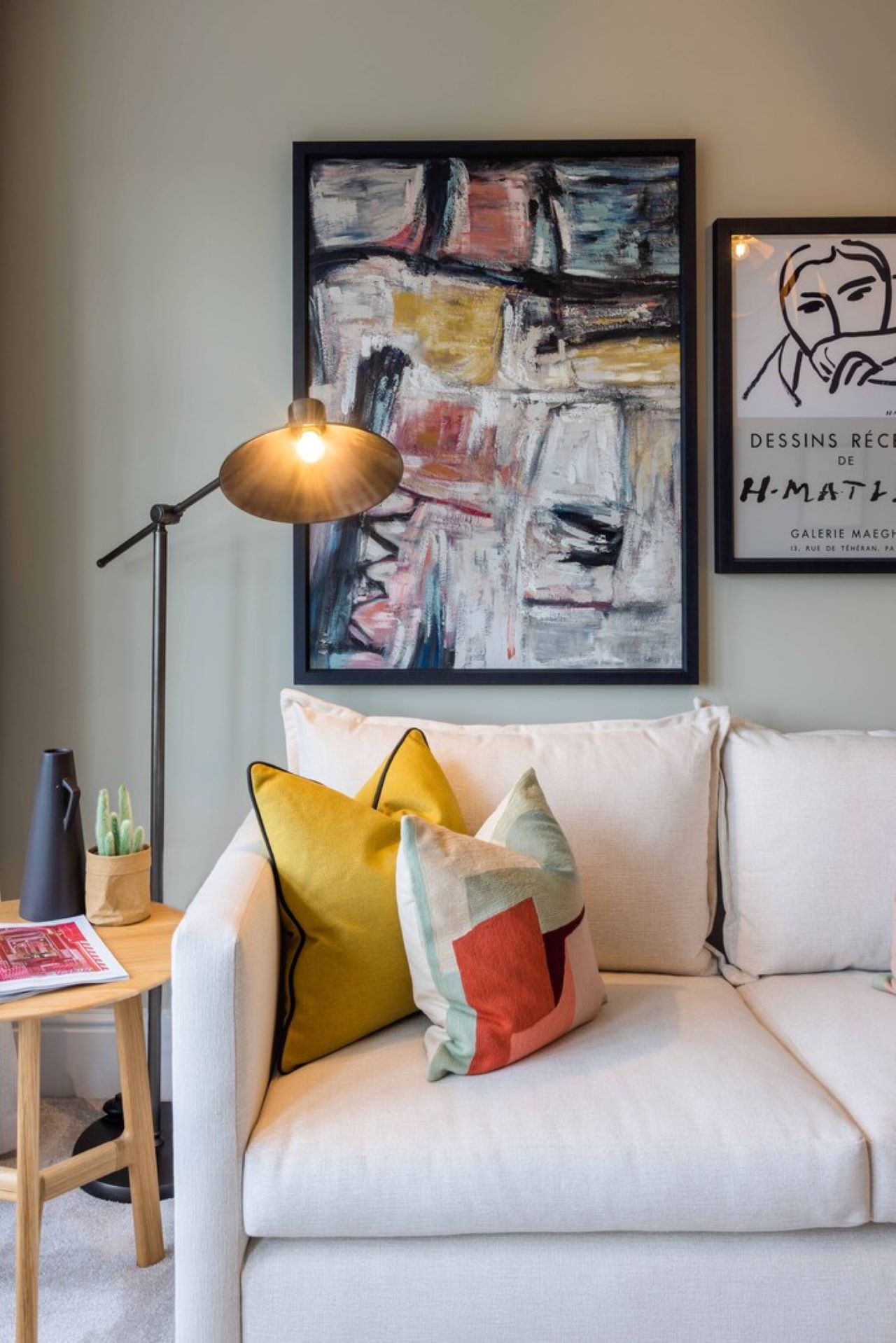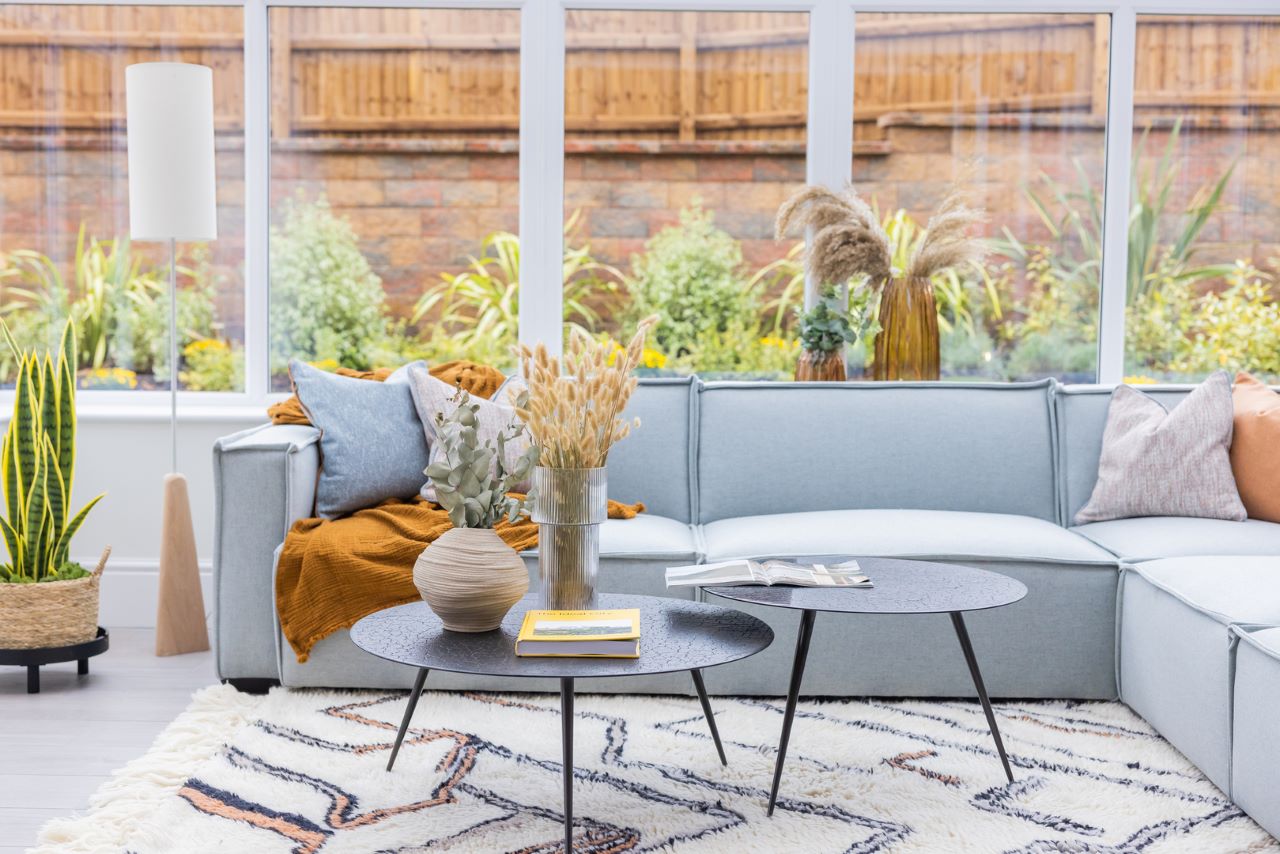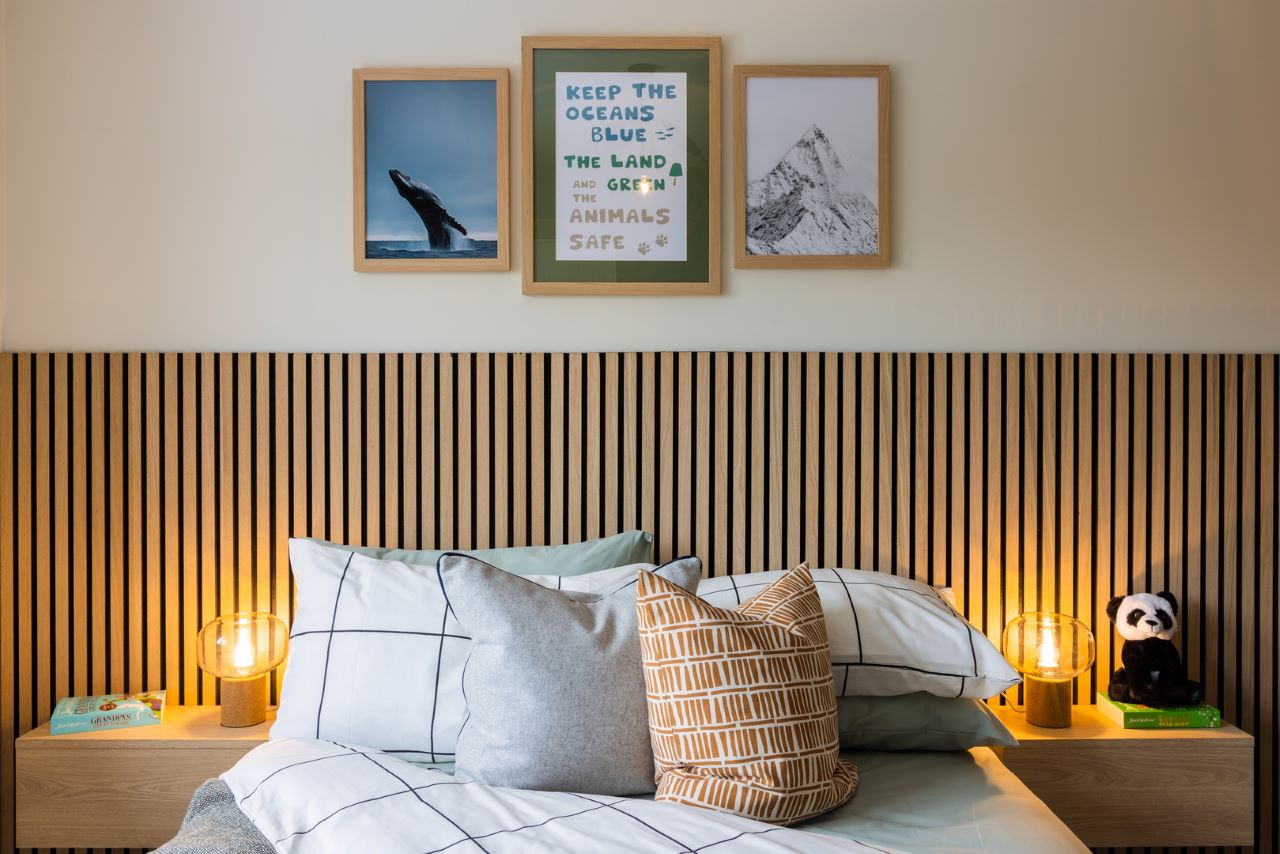In this latest New Homes podcast, filmed in our innovative Oxford show home at Kensington Gate in Worcester, Sonal Haja asks Redrow Group interior designer Alysha Alli and sustainable influencer Jarvis Smith, of My Green Pod, how can we live more sustainably, and how we can style and decorate our homes with sustainability in mind.
WHAT EXCITES YOU ABOUT SUSTAINABILITY?
Most people now understand that sustainability is the way to go, says Jarvis, and we’ve moved forward in recent years, with transitions in energy use, more people using energy-efficient products, and many driving around in electric cars. But he adds: “What I love about the whole thing is people are remembering nature and our planet, and every resource on the planet comes from nature, everything.”
Alysha agrees it’s no longer just a trend but a lifestyle, linking to our homes, how they function and how they look.

WHAT’S SPECIAL ABOUT THE OXFORD SHOW HOME AT KENSINGTON GATE?
“This is a more sustainable show home than we normally fit out,” Alysha explains. “We took a lot longer designing this home because we wanted to think about how we designed it from a sustainable perspective.”
That included looking at where everything was from and using mainly UK suppliers, to specifics like paint, wallpaper and furniture. Redrow has much of its furniture bespoke made, the majority made in the UK, so with sofas, for instance: “We looked at the fabrics. We used bottle-recycled fabrics and non-foam cushions, so they’re woven-like hair fibres.”
“The feel of the house is fantastic,” says Jarvis, “the natural materials, the colours, so that’s kind of aesthetic. But I wanted to look into the detail a bit more, the paint, for example, from a company called Lick, which is low-VOC (Volatile Organic Compounds). People don’t realise their homes are more toxic inside than they are on the high street. Why? Because of the paints, the toxic chemicals in the fabrics, in the materials you’re using, in the cleaning products…”
WHY DECIDE TO DESIGN A SUSTAINABLE HOME?
Alysha says it was a huge opportunity for Redrow to demonstrate to its customers how to create a home that is more sustainable: “We are a national housebuilder that paves the way, and should be paving the way, in creating warmer homes and energy-efficient homes, and, equally, what you put in your home once you’ve got it.”
Jarvis, who co-founded My Green Pod, which offers ethical lifestyle information and advice as well as ethical alternatives to mainstream products, says: “We are seeing right across the globe that we have got to change the world we live on.”

WHERE WERE THE ETHICAL ITEMS SOURCED FROM?
Much was sourced locally or from where the stylist was from to save it being shipped from abroad, says Alysha, so websites like Etsy proved invaluable; but larger retailers like H&M and Dunelm have ‘conscious’ ranges too. Wood needed to be FSC-approved.
It can mean more thought is needed, admits Jarvis: “You have got to do a bit more research and it takes more time, and that’s a good thing, because if we can take more time in the way we’re choosing things, we can be more considerate.”
But you can also upcycle, says Jarvis: “If you need a new sofa or a new table, or whatever, go and buy something second-hand and give it a polish or put new material on it. Of course, if you’re moving into a new home, you want new stuff, but a balance…” Buying sustainably, he adds, can mean better quality and longevity, so ultimately the cost can be cheaper too.
HOW DO YOU LIVE A MORE SUSTAINABLE LIFESTYLE?
There are six or seven key areas, says Jarvis, who has been pioneering a more ethical way of living for around 14 years.
They include what you put in your body - eating organic and plant-based foods which can be ‘slightly more expensive for you but better for the planet’ - and what you put on your body, from creams to toothpaste and deodorants, as well as the products you use in your home.
And he adds, it goes as far as how you are using your money: “What is your money funding? What bank are you using and what is that contributing to?”

WHAT EFFECT HAS COVID HAD ON SUSTAINABILITY?
“The pandemic, as horrible as it was, really gave the whole world the opportunity to see cause and effect when it comes to sustainability,” says Jarvis. “It opened everyone’s eyes. It was a global re-set.” More people stayed at home and didn’t go to work, they stopped buying non-essential goods, he says, and started caring more for each other and appreciating nature. “What did we see in a matter of months? Pollution came down, carbon emissions came down. It was huge.”
HOW EASY IS IT TO CREATE A SUSTAINABLE HOME?
We are in our homes now more than ever and going out for a meal, even, has transitioned into eating at home, says Alysha. “So if you want a new table, just look at where it’s from.”
Styling items can be a quick, first fix, so buy from Etsy or conscious ranges of big retailers; make your own or upcycle, go to Facebook Marketplace. Look at energy- saving lightbulbs.
“Greenery in the home is great for well-being,” adds Alysha.
Jarvis says: “This is about a conscious movement and people are becoming more conscious of the way they are living and clearly you (Redrow) have raised your game and level on consciousness about materials. It’s brilliant.”





